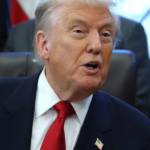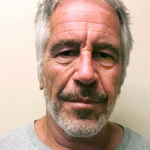It was the first clarity from the Trump administration since the president took to social media last week to say he had “instructed the Department of War to start testing our Nuclear Weapons on an equal basis.”
Wright, whose agency is responsible for testing, added that the planned testing involves “all the other parts of a nuclear weapon to make sure they deliver the appropriate geometry and they set up the nuclear explosion.”
Later that day, as he made his way back to Washington, Trump was coy on whether he really meant to say he was ordering the resumption of explosive testing of nuclear weapons — something only North Korea has undertaken this century — or calling for the testing of U.S. systems that could deliver a nuclear weapon, which is far more routine.
“You’ll find out very soon,” Trump told reporters aboard Air Force One on Friday, as he headed to Florida for a weekend stay.
The U.S. military regularly tests its missiles that are capable of delivering a nuclear warhead, but it has not detonated the weapons since 1992. The Comprehensive Nuclear Test Ban Treaty, which the U.S. signed but did not ratify, has been observed since its adoption by all countries possessing nuclear weapons, North Korea being the only exception.
Russia responded to Trump’s nuclear testing comments by underscoring that it did not test its nuclear weapons and has abided by a global ban on nuclear testing.
The Kremlin warned though, that if the U.S. resumes testing its weapons, Russia will as well — an intensification that would restart Cold War-era tensions.









